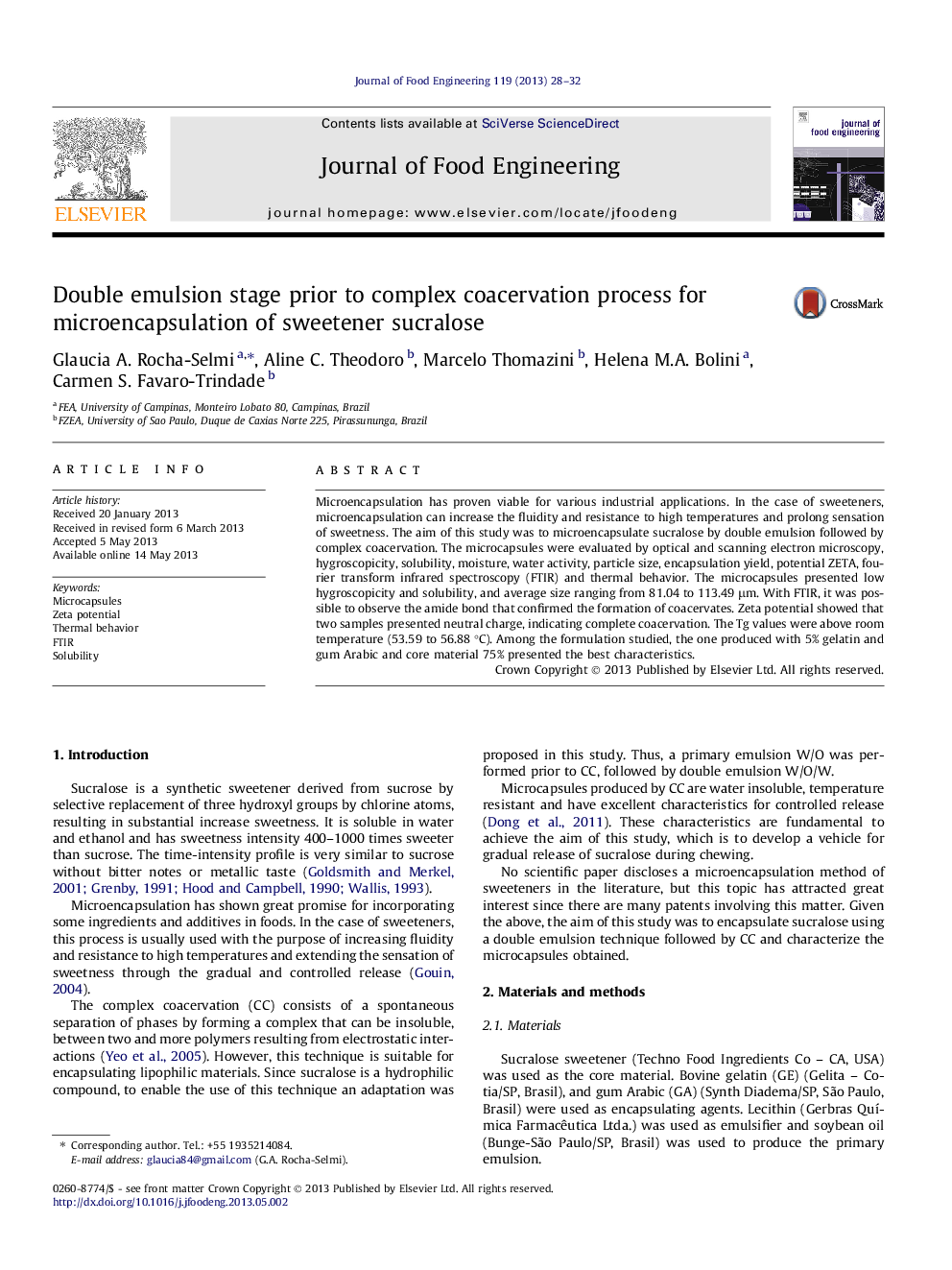| Article ID | Journal | Published Year | Pages | File Type |
|---|---|---|---|---|
| 10277441 | Journal of Food Engineering | 2013 | 5 Pages |
Abstract
Microencapsulation has proven viable for various industrial applications. In the case of sweeteners, microencapsulation can increase the fluidity and resistance to high temperatures and prolong sensation of sweetness. The aim of this study was to microencapsulate sucralose by double emulsion followed by complex coacervation. The microcapsules were evaluated by optical and scanning electron microscopy, hygroscopicity, solubility, moisture, water activity, particle size, encapsulation yield, potential ZETA, fourier transform infrared spectroscopy (FTIR) and thermal behavior. The microcapsules presented low hygroscopicity and solubility, and average size ranging from 81.04 to 113.49 μm. With FTIR, it was possible to observe the amide bond that confirmed the formation of coacervates. Zeta potential showed that two samples presented neutral charge, indicating complete coacervation. The Tg values were above room temperature (53.59 to 56.88 °C). Among the formulation studied, the one produced with 5% gelatin and gum Arabic and core material 75% presented the best characteristics.
Related Topics
Physical Sciences and Engineering
Chemical Engineering
Chemical Engineering (General)
Authors
Glaucia A. Rocha-Selmi, Aline C. Theodoro, Marcelo Thomazini, Helena M.A. Bolini, Carmen S. Favaro-Trindade,
